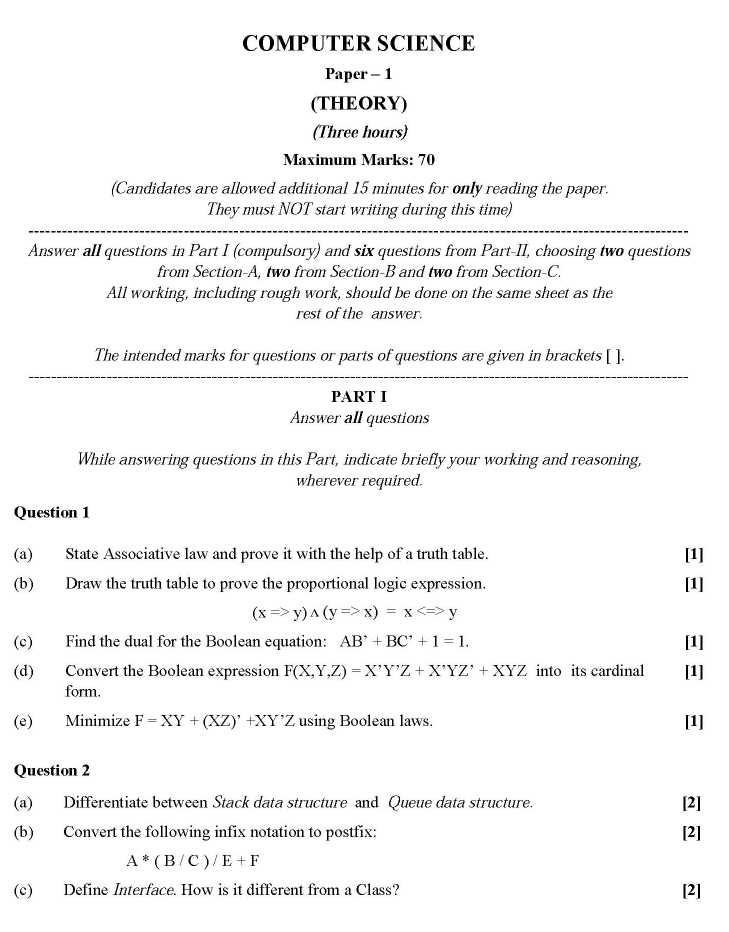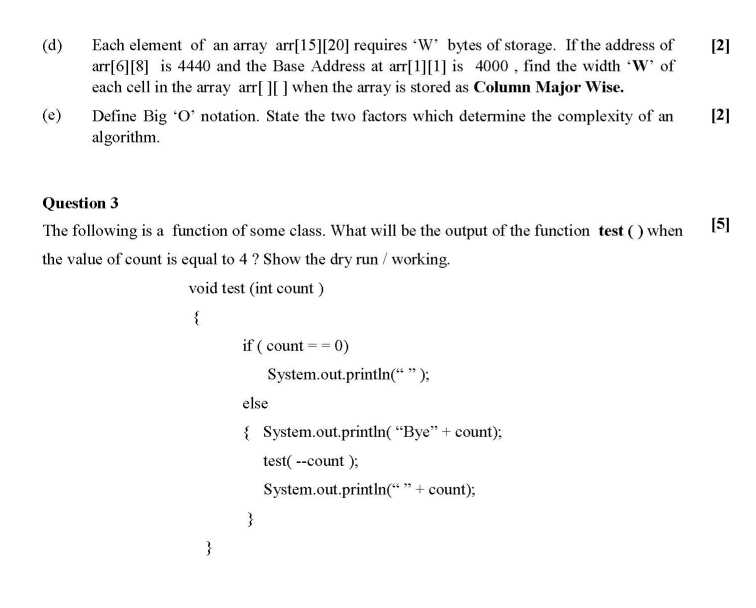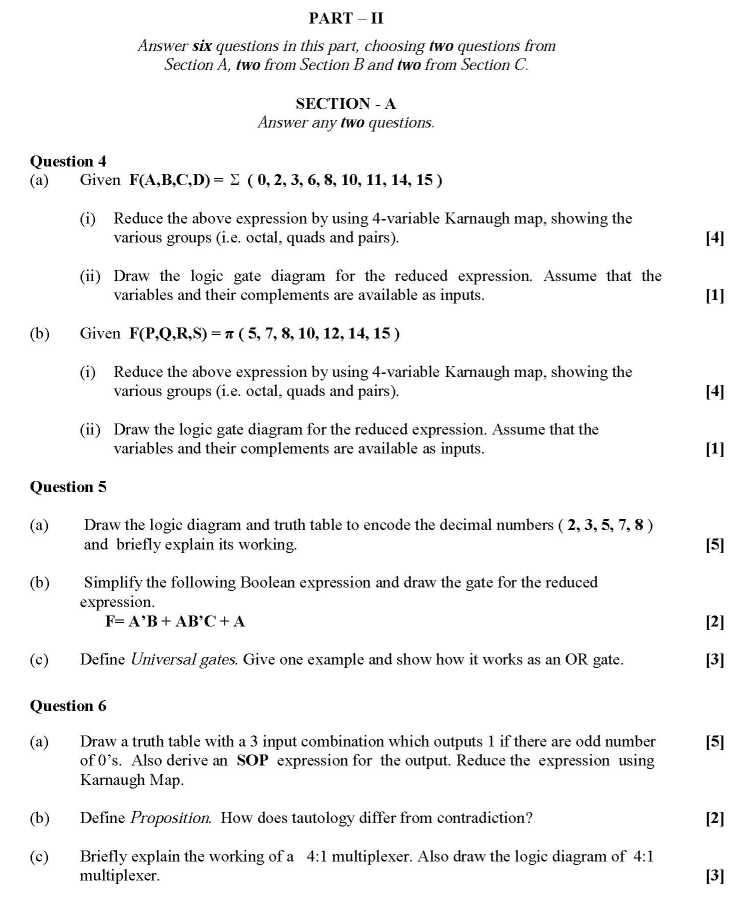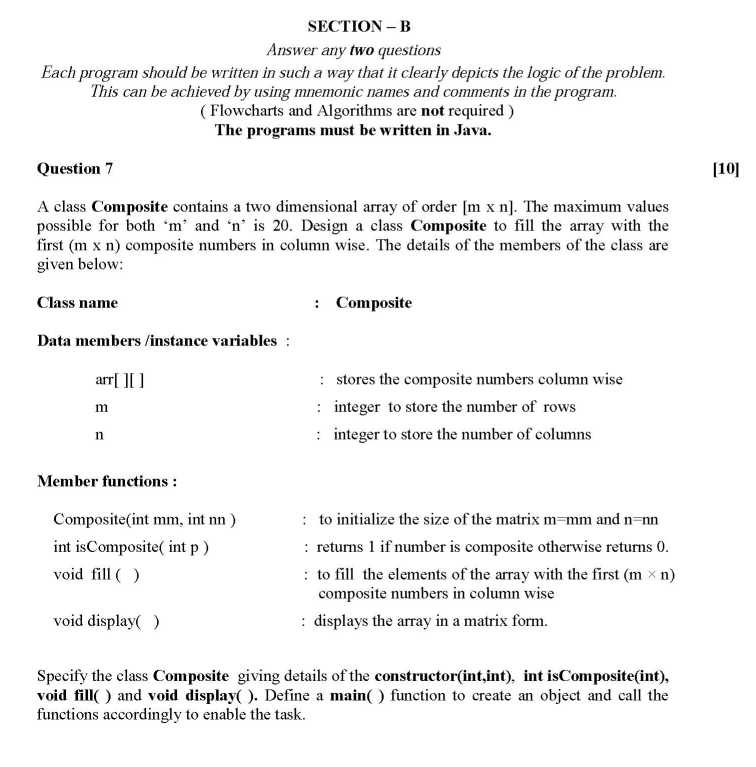|
#4
5th March 2016, 12:32 PM
| |||
| |||
| Re: Question Paper of ISC Computer Science
Hey buddy below I am giving you the question paper of ISC Computer Science Question 1 (a) State Associative law and prove it with the help of a truth table. [1] (b) Draw the truth table to prove the proportional logic expression. (x => y) ʌ (y => x) = x <=> y [1] (c) Find the dual for the Boolean equation: AB’ + BC’ + 1 = 1. [1] (d) Convert the Boolean expression F(X,Y,Z) = X’Y’Z + X’YZ’ + XYZ into its cardinal form. [1] (e) Minimize F = XY + (XZ)’ +XY’Z using Boolean laws. [1] Question 2 (a) Differentiate between Stack data structure and Queue data structure. [2] (b) Convert the following infix notation to postfix: A * ( B / C ) / E + F [2] (c) Define Interface. How is it different from a Class? [2] ISC SPECIMEN QUESTION PAPER 2016 (d) Each element of an array arr[15][20] requires ‘W’ bytes of storage. If the address of arr[6][8] is 4440 and the Base Address at arr[1][1] is 4000 , find the width ‘W’ of each cell in the array arr[ ][ ] when the array is stored as Column Major Wise. [2] (e) Define Big ‘O’ notation. State the two factors which determine the complexity of an algorithm. [2] Question 3 The following is a function of some class. What will be the output of the function test ( ) when the value of count is equal to 4 ? Show the dry run / working. [5] void test (int count ) { if ( count = = 0) System.out.println(“ ” ); else { System.out.println( “Bye” + count); test( --count ); System.out.println(“ ” + count); } } - ISC SPECIMEN QUESTION PAPER 2016 PART – II Answer six questions in this part, choosing two questions from Section A, two from Section B and two from Section C. SECTION - A Answer any two questions. Question 4 (a) Given F(A,B,C,D) = ( 0, 2, 3, 6, 8, 10, 11, 14, 15 ) (i) Reduce the above expression by using 4-variable Karnaugh map, showing the various groups (i.e. octal, quads and pairs). [4] [4] (ii) Draw the logic gate diagram for the reduced expression. Assume that the variables and their complements are available as inputs. [1] (b) Given F(P,Q,R,S) = π ( 5, 7, 8, 10, 12, 14, 15 ) (i) Reduce the above expression by using 4-variable Karnaugh map, showing the various groups (i.e. octal, quads and pairs). [4] (ii) Draw the logic gate diagram for the reduced expression. Assume that the variables and their complements are available as inputs. [1] Question 5 (a) Draw the logic diagram and truth table to encode the decimal numbers ( 2, 3, 5, 7, 8 ) and briefly explain its working. [5] (b) Simplify the following Boolean expression and draw the gate for the reduced expression. F= A’B + AB’C + A [2] (c) Define Universal gates. Give one example and show how it works as an OR gate. [3] Question 6 (a) Draw a truth table with a 3 input combination which outputs 1 if there are odd number [5] of 0’s. Also derive an SOP expression for the output. Reduce the expression using Karnaugh Map. (b) Define Proposition. How does tautology differ from contradiction? [2] (c) Briefly explain the working of a 4:1 multiplexer. Also draw the logic diagram of 4:1 multiplexer. Question Paper of ISC Computer Science      |